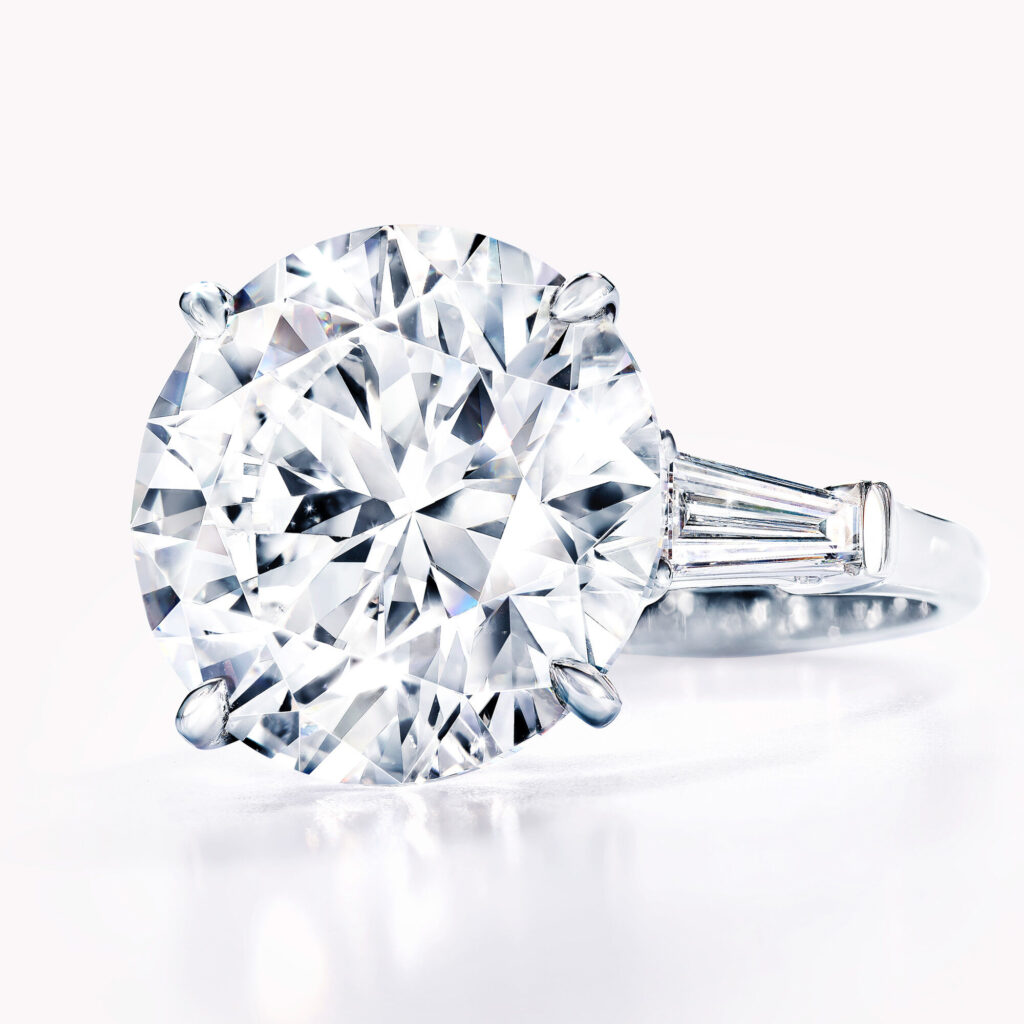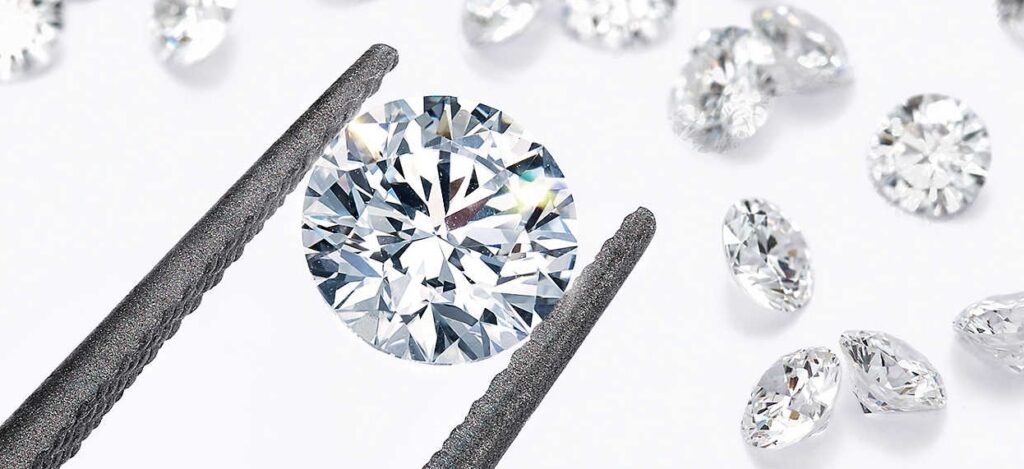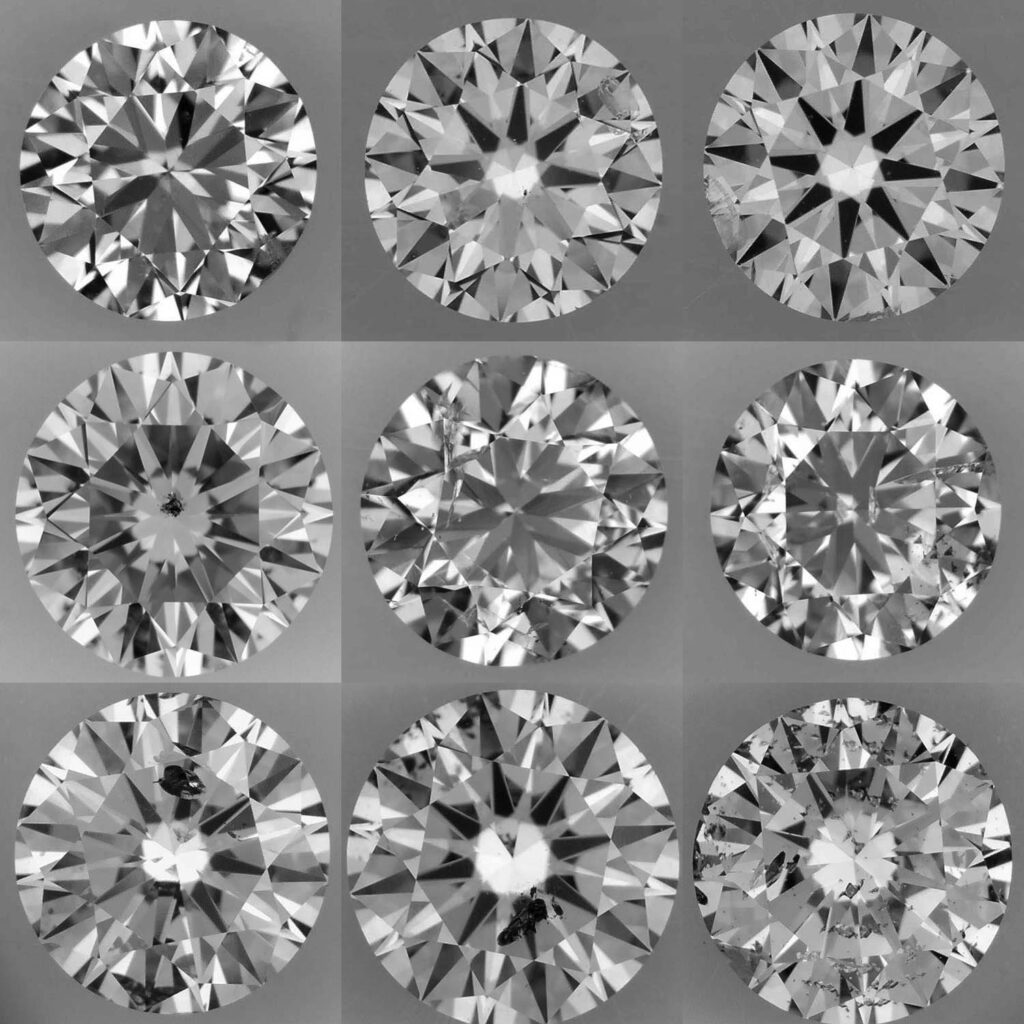There is no doubt that diamonds are some of the most beautiful stones on the planet. Whether referring to loose diamonds or you are instead hoping to purchase a stone which has already been mounted, there are numerous characteristics to consider and research to get the right diamond jewelry for you. These are often referred to as the four C’s (clarity, carat, color, and cut) and will have the biggest impact on the price.
Although many of us are impressed by the size of a stone or its unique hues, we should keep in mind that cut and clarity are the most critical factors. Why is the cut of a diamond so important? How is the cut determined and how will the shape of a stone be graded in terms of value? These are some of the questions that we will examine below.
Click here to see the table of contents
What is the Cut of a Diamond?
Every diamond originates as a rough stone. While still stunning, it is only after a stone is cut and polished that it will exhibit its trademark brilliance. A specialist jeweler will take a look at the shape and dimensions of the diamond in question. He or she then determines which type of cut will accentuate the unique qualities of the stone and will create the final unique masterpiece.
What is the Intention of a Cut?

Source: graff.com
Cuts serve two main purposes. The first is to provide a means by which to mount a stone to a piece of jewelry such as a ring or a necklace. However, it can be argued that the most important purpose of the cut is to accentuate the scintillating features of the diamond itself. Each facet of a diamond is shaped in such a way as to reflect the most amount of light possible, even within a dull environment.
Cuts act in a similar manner to small prisms; allowing light to be refracted and subsequently reflected towards the viewer. This is also why professionally cut diamonds are said to contain a kaleidoscope of colors within.
How are Cuts Graded?
There are several issues which will be taken into account during the grading process. Here are a handful of factors:
- Light factors such as brilliance and reflectiveness
- The number of facets
- The total weight of the stone
- Aesthetic concerns such as symmetry and polish
As you might have imagined, these grading methods will also have a massive impact upon the price of the diamond itself and the final worth of the jewelry it’s set into. Here is a very informative video brought to us by the American Gem Society, a nonprofit trade association of fine jewelry professionals, to give a clear insight into the mind of a diamond grader.
Why Will the Cut Often Determine Value?
So, we once again return to the primary intention of this article. Cuts will affect value due to how they impact the visual and refractive qualities of the stone. More complicated shapes are also priced higher due to the amount of skill and work that goes into their production. The most famous shapes of the diamond cuts are:
- Round Brilliant
- Princess
- Emerald
- Cushion
- Asscher
- Pear
- Oval
- Radiant
- Baguette
- Marquise
- Heart
- Trillion
As there are many different shapes to choose from, it is often wise to speak with a professional diamond jeweler and do your research online on reputable websites to get a better understanding of the quality of diamonds you are after and their price.
Some of those sites is: www.whiteflash.com/loose-diamonds/search/
So what about Clarity Then?

Source: tiffany.com
While each metric is obviously important, clarity will dramatically impact the price of the stone as well as its overall appearance. What role do inclusions play? What does the acronym “VVS” stand for when paired with diamonds? Can specific VVS subcategories further impact the price of a stone? These are all questions which warrant a significant amount of attention. If you hope to make an informed decision, the details found below will come in handy.
What are Diamond Inclusions and How do They Impact Clarity?
We first need to remember that a diamond was formed deep beneath the earth under extremely high pressures and temperatures. While these stones are primarily composed of carbon atoms, there are times when impurities can become embedded within their matrices. These are referred to as “inclusions” by gem experts. A diamond which contains more inclusions will be graded lower when compared to one that is flawless or nearly flawless. This brings us to the next section.
A Look at VVS Grades
VVS is an acronym for “very very slightly” included. In other words, there are only a handful of small inclusions which will not dramatically impact the overall appearance of the stone. Here is a simple breakdown of diamond grades in order to appreciate how VVS compares to some other ratings:
- Flawless
- Internally flawless
- Very very slightly included
- Very slightly included
- Slightly included
- Included
As we can see, the rarest stones are associated with a flawless or near flawless appearance. These are followed by a growing number of inclusions until such imperfections are clearly visible to the naked eye. The price of the diamond in question will obviously be affected by the number of inclusions, as these impact how light is reflected.
How Clarity Will Ultimately Impact Price

Source: diamondsgeek.com
We also need to mention that there are two VVS subcategories to note:
- VVS1
- VVS2
VVS1-rated diamonds contain fewer inclusions in relation to their VVS2 counterparts. However, it should be pointed out that such differences are normally not apparent to the naked eye. These are instead detected by using professional lighting equipment and magnification lenses.
The price of any VVS diamond will obviously be affected by its VVS rating and this can sometimes equate to hundreds of dollars. This is why it is important to consult with an online dealer who has been recognized by the American Gem Society (AGS) or the Gemological Institute of America (GIA).
These professionals offer a number of different grades depending upon your budget. As VVS stones are some of the most common, the chances are high that you will have a number of stunning options to choose from. Either way, VVS diamonds are some of the most attractive stones in existence.
Final Thoughts
Whether you wish to finally propose to that special someone and would like to “reflect” that in the best engagement ring you can afford, or you are simply interested in diamonds as a long-term investment opportunity and to build your assets portfolio, the cut and clarity of the stone should not be taken for granted and should be determined at the beginning of your diamond shopping journey.
